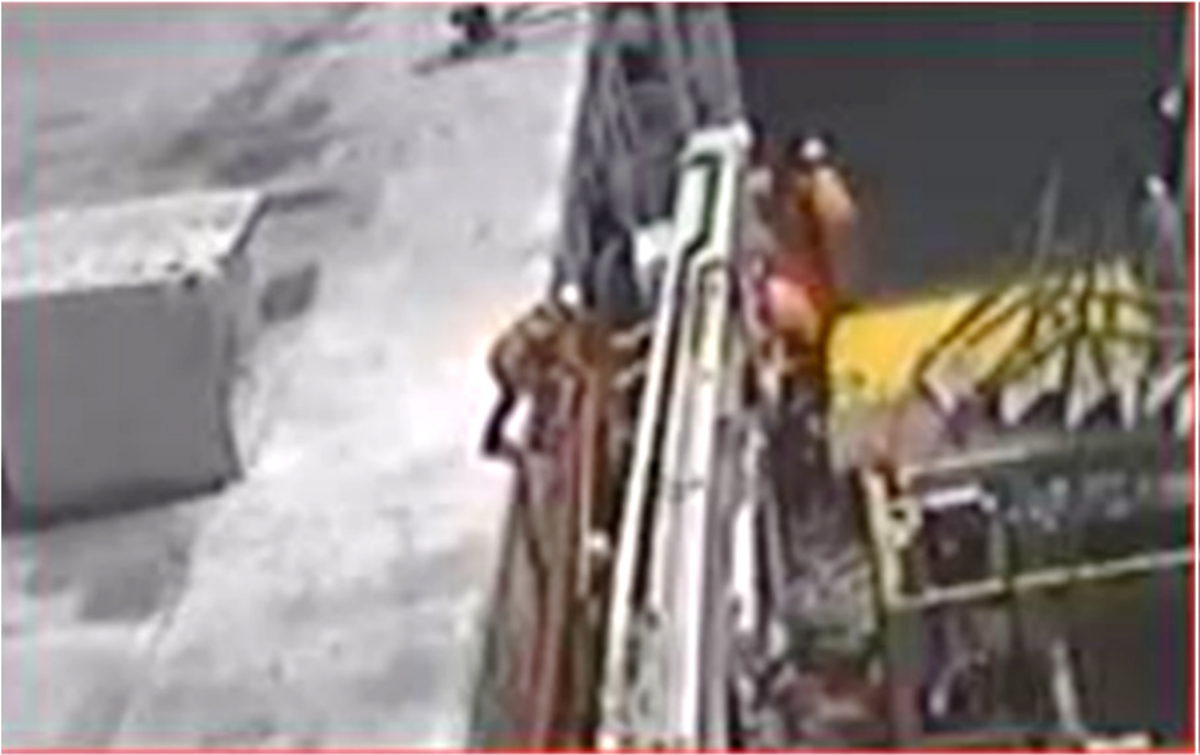Unsafe boarding during unmooring operation
- Safety Flash
- Published on 6 December 2019
- Generated on 9 December 2025
- IMCA SF 28/19
- 2 minute read
Jump to:
A vessel was departing from port when crew found it necessary to remove the mooring lines from the shoreside bollards with no safe un-boarding/boarding arrangements in place – instead clambering over the side (CCTV capture shown below).
What happened?
A standard unmooring process (using shore-based support) had been discussed with the team involved during the pre-task briefing/toolbox talk.

What went wrong?
- Failure to follow company operating procedures and internal HSSE rules.
- Ineffective assessment of risks before starting work.
- Failure to effectively recognise and manage the safety risks associated with the change to the planned activity (failure to manage change).
- No-one stopped the job (stop work authority).
What actions were taken?
- The fouled mooring line was removed/cleared from the thruster.
- Reinforcement and raising awareness of:
- existing company rules on safety including the obligation of all employees to ‘speak up/step in’ if they see an unsafe act and/or condition
- the importance of dynamic risk assessment and management of change (MoC)
- the relevant sections of Code of Safe Working Practices for Merchant Seafarers (COSWP)
- fleet level risk assessment and management procedures
- fleet level vessel mooring/unmooring procedures.
- existing company rules on safety including the obligation of all employees to ‘speak up/step in’ if they see an unsafe act and/or condition
- There was a visit by senior management and discussion with the team involved.
What lessons were learned?
- Vessel crew should not act as linesmen for their own vessel.
- Contingency plans should be developed in advance for this type of routine activity.
- Changes to any activity should be effectively risk assessed and managed using the MoC process.
Featured Safety Flashes
-
IMCA SF 33/16
6 December 2016
-
IMCA SF 04/16
5 February 2016
-
IMCA SF 02/15
5 February 2015
IMCA Safety Flashes summarise key safety matters and incidents, allowing lessons to be more easily learnt for the benefit of the entire offshore industry.
The effectiveness of the IMCA Safety Flash system depends on the industry sharing information and so avoiding repeat incidents. Incidents are classified according to IOGP's Life Saving Rules.
All information is anonymised or sanitised, as appropriate, and warnings for graphic content included where possible.
IMCA makes every effort to ensure both the accuracy and reliability of the information shared, but is not be liable for any guidance and/or recommendation and/or statement herein contained.
The information contained in this document does not fulfil or replace any individual's or Member's legal, regulatory or other duties or obligations in respect of their operations. Individuals and Members remain solely responsible for the safe, lawful and proper conduct of their operations.
Share your safety incidents with IMCA online. Sign-up to receive Safety Flashes straight to your email.